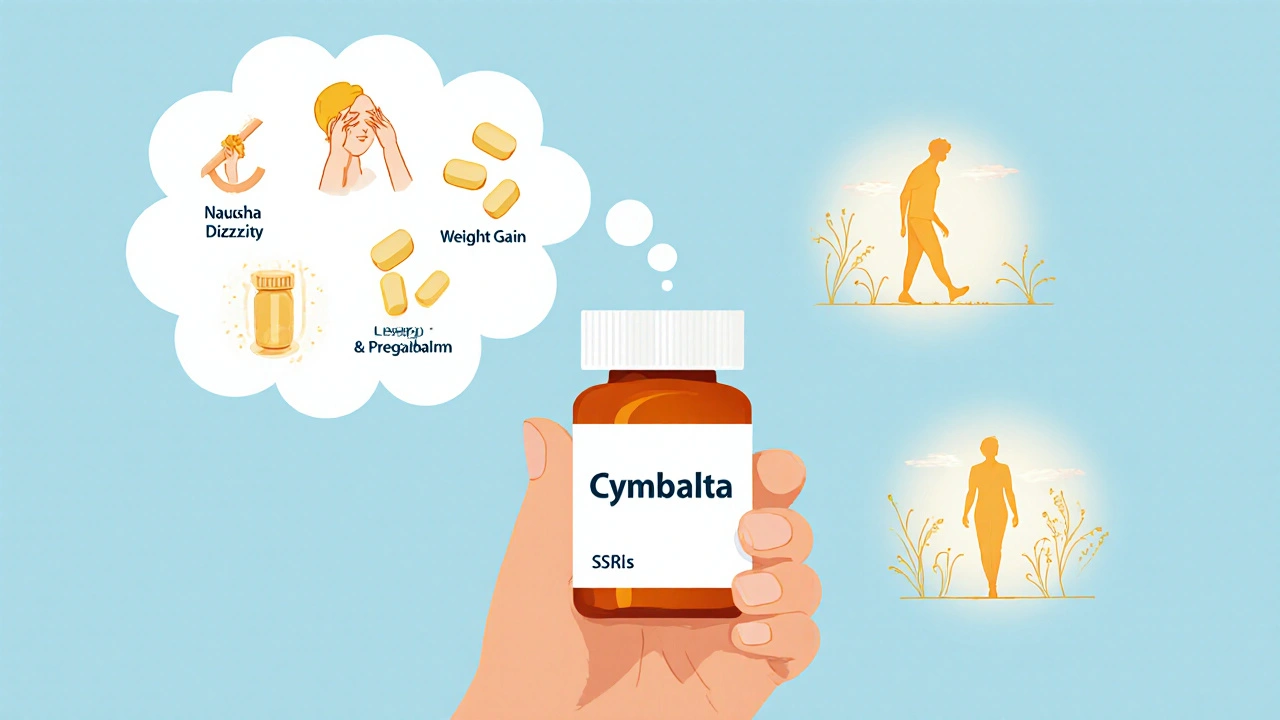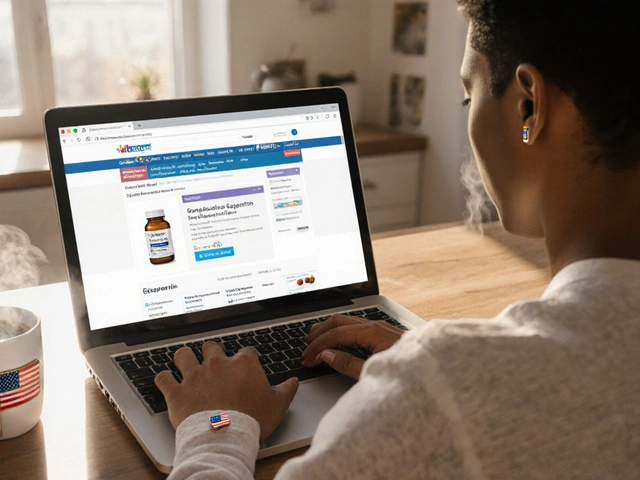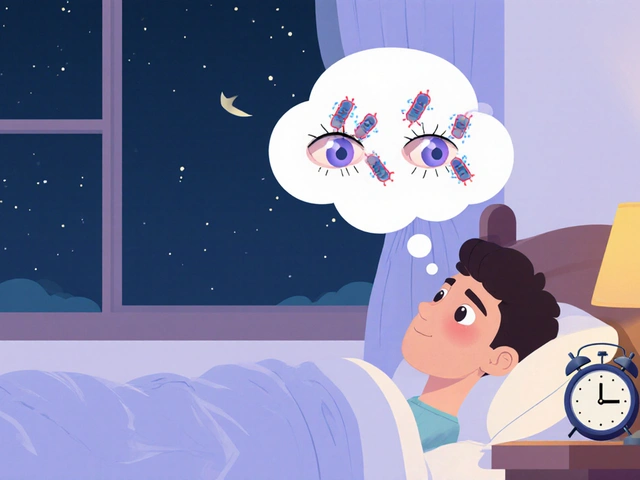Cymbalta Alternatives Selector
Find Your Best Cymbalta Alternative
Recommended Alternatives
Select your concerns and side effects to see personalized recommendations.
If you’re taking Cymbalta (duloxetine) and wondering if there’s a better option, you’re not alone. Many people start on this medication for depression, anxiety, or nerve pain-only to find side effects like nausea, dizziness, or weight gain that make it hard to stick with. Others never respond well at all. The truth is, Cymbalta isn’t the only path forward. There are other medications, some with fewer side effects, others with faster results, and a few that work better for specific symptoms like chronic back pain or fibromyalgia.
What Cymbalta Actually Does
Cymbalta is a serotonin-norepinephrine reuptake inhibitor, or SNRI. That means it boosts two brain chemicals-serotonin and norepinephrine-that help regulate mood and pain signals. It’s FDA-approved for major depressive disorder, generalized anxiety disorder, diabetic nerve pain, fibromyalgia, and chronic musculoskeletal pain. But it doesn’t work the same for everyone. About 40% of people don’t get full relief from depression with Cymbalta alone, according to data from the Journal of Clinical Psychiatry. And side effects are common: up to 30% of users report dry mouth, fatigue, or trouble sleeping.
Why People Look for Alternatives
People stop Cymbalta for a few clear reasons. One is side effects. Nausea hits hard in the first two weeks for many. Others feel emotionally numb or lose sex drive. Some gain weight-up to 5 pounds in the first 3 months, based on clinical trial data. Others just don’t feel better after 6-8 weeks, which is the usual window to judge if an antidepressant is working.
Then there’s cost. Cymbalta is still under patent in some places, and without insurance, a 30-day supply can run over $200. Generic duloxetine is cheaper, but not always available. That pushes people to look at other options that are just as effective-but less expensive or better tolerated.
SSRIs: The Most Common Switch
Selective serotonin reuptake inhibitors (SSRIs) are the most prescribed antidepressants in the world. They’re often the first choice because they’re gentler on the body than SNRIs like Cymbalta. Common SSRIs include sertraline (Zoloft), escitalopram (Lexapro), and fluoxetine (Prozac).
For depression and anxiety, SSRIs work just as well as Cymbalta in most studies. But they don’t affect norepinephrine, so they’re less effective for nerve pain. That’s a key difference. If your main issue is back pain or fibromyalgia, switching to an SSRI might leave you worse off. But if your struggle is mostly mood-related-with panic attacks, social anxiety, or low energy-SSRIs are often a smoother ride.
Lexapro, for example, has fewer sexual side effects than Cymbalta and is less likely to cause weight gain. Zoloft is affordable, widely available as a generic, and has been used safely for over 25 years. Many patients who couldn’t handle Cymbalta’s dizziness and fatigue find SSRIs much easier to live with.
SNRIs Other Than Cymbalta
Not all SNRIs are the same. Venlafaxine (Effexor) is another SNRI, and it’s been around longer than Cymbalta. It’s effective for depression and anxiety, and some studies show it works better for severe cases. But it has a bigger side effect profile: higher blood pressure, more sweating, and a tougher withdrawal if stopped suddenly.
Desvenlafaxine (Pristiq) is a metabolite of venlafaxine. It’s marketed as having fewer side effects, but the evidence doesn’t strongly back that up. It’s also more expensive than generic duloxetine. So unless you’ve tried Cymbalta and had a bad reaction, switching to another SNRI rarely makes sense.
One exception: if you’re on Cymbalta for nerve pain and it’s not working, venlafaxine might be worth a trial. Some neurologists prefer it for diabetic neuropathy because it’s more potent at blocking norepinephrine reuptake.

Mirtazapine: The Sleep-Friendly Option
If you’re taking Cymbalta and struggling with insomnia or loss of appetite, mirtazapine (Remeron) could be a game-changer. It’s not an SSRI or SNRI-it works differently, boosting serotonin and norepinephrine by blocking certain receptors. The biggest perk? It makes you sleepy. That’s a plus if you’re lying awake at night. It also increases appetite, which helps people who’ve lost weight due to depression.
But it comes with trade-offs. Weight gain is common-up to 10 pounds in a few months. Some people feel groggy in the morning. And it doesn’t help with pain like Cymbalta does. So if you’re using Cymbalta for fibromyalgia or back pain, switching to mirtazapine might leave you in more discomfort.
It’s a solid choice for depression with sleep and appetite issues-but not for pain.
SNRIs for Pain: Tapentadol and Pregabalin
If your main problem is chronic pain-not depression or anxiety-then you might not need an antidepressant at all. Tapentadol (Nucynta) is an opioid-like painkiller that also affects norepinephrine. It’s approved for moderate to severe pain and works faster than Cymbalta. But it’s not for long-term use because of addiction risk.
Pregabalin (Lyrica) is another option. It’s not an antidepressant. It calms overactive nerves. It’s FDA-approved for fibromyalgia, diabetic nerve pain, and spinal cord injury pain. Many patients find it works better than Cymbalta for burning, shooting pain. But it causes dizziness and swelling in the hands and feet. It’s also expensive and can be habit-forming.
Here’s the reality: if pain is your main issue, Cymbalta is a second-line option. Guidelines from the American College of Rheumatology recommend pregabalin or gabapentin first for fibromyalgia. Cymbalta comes after those, or if you have both pain and depression.
Non-Medication Alternatives
Medication isn’t the only path. Cognitive behavioral therapy (CBT) has been shown to be just as effective as Cymbalta for depression and anxiety in multiple large studies. A 2023 meta-analysis in The Lancet found CBT had similar results to SSRIs and SNRIs over 12 weeks-and better long-term outcomes because people learn skills that last.
Exercise is another powerful tool. Just 30 minutes of brisk walking five times a week can boost serotonin and norepinephrine naturally. Studies show it reduces symptoms of depression as effectively as medication for mild to moderate cases. It also helps with pain by improving circulation and reducing inflammation.
For nerve pain, acupuncture and mindfulness meditation have shown real benefits in clinical trials. One 2024 study found that 60% of fibromyalgia patients who did 8 weeks of mindfulness reported less pain than those on Cymbalta.
These aren’t quick fixes. But they don’t come with dizziness, weight gain, or withdrawal symptoms. Many people combine them with lower-dose meds for the best results.
How to Decide What’s Right for You
Here’s a simple way to think about your options:
- Pain is your main issue? Try pregabalin or gabapentin first. If you also have depression, add Cymbalta or an SSRI.
- Depression and anxiety without pain? Start with an SSRI like sertraline or escitalopram. They’re cheaper and gentler.
- Can’t sleep or eat? Mirtazapine might help-but watch for weight gain.
- Side effects from Cymbalta? Switch to an SSRI. Give it 6 weeks. If no improvement, talk to your doctor about CBT or exercise.
- Cost is a problem? Generic sertraline costs under $5 a month at many pharmacies. Cymbalta generics are cheaper too, but not always available.
Never stop Cymbalta cold turkey. Withdrawal can cause brain zaps, nausea, and anxiety. Taper slowly over 2-4 weeks with your doctor’s help.
When to Stick With Cymbalta
Some people do great on it. If you’ve been on Cymbalta for 6 months, your mood is stable, your pain is under control, and you’re not struggling with side effects-there’s no reason to change. The goal isn’t to switch for the sake of switching. It’s to find what works best for you.
One patient I worked with in Durban had fibromyalgia and severe anxiety. She tried three other meds before Cymbalta. It was the only one that gave her back her energy and reduced her pain by 70%. She’s been on it for three years. No side effects. No need to change.
That’s the point. There’s no universal best drug. It’s about matching the medication to your symptoms, your body, and your life.
What to Ask Your Doctor
If you’re thinking of switching, bring these questions to your next appointment:
- Is my main issue mood, pain, or both?
- Which side effects am I having, and are they likely to improve?
- What’s the cost difference between Cymbalta and alternatives?
- Have you seen good results with other meds for patients like me?
- Can we try a non-medication option like CBT or exercise alongside my current treatment?
Don’t feel pressured to stay on something that doesn’t feel right. But don’t switch without a plan. Work with your doctor to make a safe, smart move.
Is Cymbalta better than SSRIs for anxiety?
For anxiety alone, SSRIs like Lexapro or Zoloft are just as effective as Cymbalta and often have fewer side effects. Cymbalta may offer a slight edge if you also have chronic pain, but for pure anxiety, SSRIs are usually preferred as a first choice.
Can I switch from Cymbalta to an SSRI without withdrawal?
No. Stopping Cymbalta suddenly can cause withdrawal symptoms like dizziness, nausea, and brain zaps. Always taper down slowly over 2-4 weeks under your doctor’s guidance. Your doctor may overlap the new SSRI while reducing Cymbalta to avoid a drop in mood.
Are there natural alternatives to Cymbalta?
Yes-exercise, cognitive behavioral therapy (CBT), and mindfulness have strong evidence for improving depression and anxiety. For pain, acupuncture and yoga help many people. These won’t work as fast as medication, but they’re safe, affordable, and don’t cause side effects. Many people use them alongside lower-dose meds.
Why does Cymbalta cause weight gain?
Cymbalta affects brain chemicals that control appetite and metabolism. Some people feel hungrier, especially for carbs. Others slow down their metabolism slightly. Studies show about 15-20% of users gain 5 pounds or more in the first year. It’s not universal, but it’s common enough to watch for.
Is generic duloxetine the same as Cymbalta?
Yes. Generic duloxetine contains the exact same active ingredient as Cymbalta and must meet the same FDA standards for absorption and effectiveness. The only differences are in inactive ingredients (fillers, coatings), which rarely affect how the drug works. Most people switch without issue.
Final Thoughts
There’s no single best antidepressant or pain reliever. What works for one person might not work for another. Cymbalta is a powerful tool-but it’s not the only one. If you’re struggling with side effects, cost, or lack of results, talk to your doctor. There are safer, cheaper, or more targeted options out there. And sometimes, the best solution isn’t a pill at all-it’s movement, therapy, or a change in routine.
The goal isn’t to find the most popular drug. It’s to find the one that lets you live your life without being held back by pain, anxiety, or exhaustion. That’s worth exploring.







SSRIs work fine for me. No dizziness, no brain zaps. Just chill.
I appreciate how thorough this breakdown is. Many people don't realize that Cymbalta isn't a magic bullet-it's one tool among many. The key is matching the medication to your specific symptom profile, not just going with what's prescribed first. For instance, if you're dealing with fibromyalgia and insomnia, mirtazapine might be more helpful than Cymbalta, even though it doesn't touch pain as directly. And for those who can't afford meds, CBT and daily walks are scientifically backed, low-cost alternatives that often get dismissed too quickly. It's not about finding the 'best' drug-it's about finding what lets you function without losing yourself in side effects.
Cymbalta made me feel like a zombie with a side of cravings for pizza at 2am. Switched to Zoloft-slept better, didn't gain 10 lbs, and still didn't cry in the shower. Win.
The clinical data presented here is statistically sound, yet it fails to account for inter-individual pharmacogenomic variance. A significant subset of the population carries CYP2D6 polymorphisms that render duloxetine metabolization inefficient, leading to elevated plasma concentrations and amplified side effects. This is rarely discussed in lay literature, yet it explains why some patients experience severe nausea while others tolerate it effortlessly. A pharmacogenetic panel should be standard before initiating SNRI therapy.
They don't want you to know this... but Cymbalta was created by Big Pharma to keep you dependent. 😈 The real cure? Detox with apple cider vinegar and sunlight. They banned the studies that proved it. 🌞💊 #PharmaLies
Wait-so you're telling me the FDA approved Cymbalta... but pregabalin is recommended FIRST for fibromyalgia?!?! That's not a coincidence. That's a cover-up. The pharmaceutical industry is in bed with the AMA. They don't want you to know that gabapentin is dirt cheap and works better. They profit off your suffering. 🚨 Don't trust your doctor-they're paid by the pill companies. I've seen the documents. The truth is buried. 🕵️♀️
It is imperative to underscore that the efficacy of pharmacological interventions must be contextualized within the broader framework of clinical guidelines and evidence-based practice. The assertion that SSRIs are 'gentler' is not universally valid; individual tolerability varies significantly. Furthermore, the suggestion that non-pharmacological modalities are 'just as effective' is misleading without qualification of duration, adherence, and severity of symptomatology. One must exercise caution against therapeutic reductionism.
I'm not switching. Cymbalta got me through my divorce, my dad's funeral, and my back surgery. I don't care if it costs $200. I'm American. I earned this stability. 🇺🇸
OMG I was JUST on Cymbalta and it made me feel like I was underwater?? Like, I could smile but I didn't FEEL anything?? I switched to Lexapro and my best friend said I 'came back to life.' I also started yoga-no joke, it helped more than I thought. You’re not broken if it doesn’t work. It’s just not your thing. 💕
i swear to god the doctors are all in on it. cymbalta makes you fat and sleepy and then they say oh just try this other drug. but guess what? it's all the same company. they just change the name. i lost 20 lbs when i quit. now i eat kale and meditate. they hate that. 🤫
I know what they’re not telling you. Cymbalta was tested on people who already had liver damage. That’s why it causes nausea. They knew. They just didn’t tell you. The data is classified. I’ve got the redacted PDFs. You’re being used.
In India, we have no access to these medications. My cousin with fibromyalgia walks 10km daily, drinks turmeric milk, and prays. She says the pain is less than the shame of being 'mentally ill.' I weep for her. Western medicine is a luxury. We survive on silence and strength.
If it works, don't fix it. If it doesn't, talk to your doctor. Simple. No drama. Just care.